
The Ultimate Guide to Ecommerce Email Marketing Success [2024]
Are you ready to unlock the true potential of your ecommerce business through the power of email marketing? With the right strategy and tools in place, you can build strong customer relationships, drive sales, and create a loyal customer base.
In “The Ultimate Guide to Ecommerce Email Marketing Success,” we’ll walk you through the ins and outs of email marketing tools and templates, creating effective campaigns, choosing the right software, building a quality email list, and more. Let’s dive in and discover how to master ecommerce email marketing in 2023!
Key Takeaways
- Email marketing is an essential tool for ecommerce businesses to build relationships with customers and increase sales.
- Selecting the right email software, personalizing content, segmentation & A/B testing are key strategies to drive success.
- Measuring open rates, click-throughs & conversion rates help track the effectiveness of campaigns.
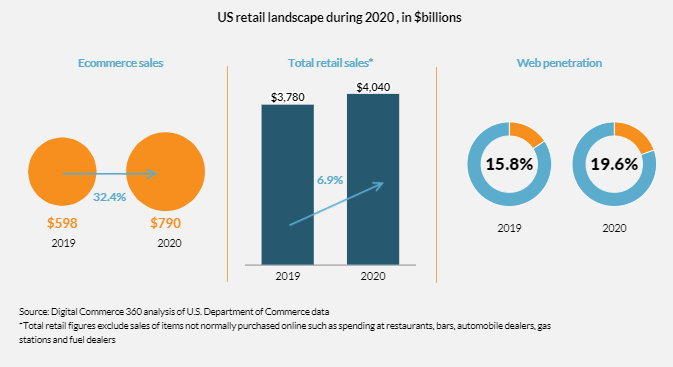
The Power of Email Marketing for Ecommerce
Email marketing has proven to be a critical component of any successful ecommerce business. Not only does it boast a high return on investment (ROI), but it also allows you to engage with your customers on a more personal level through a well-crafted email marketing campaign.
Crafting targeted email campaigns and utilizing advanced strategies effectively increases your customer lifetime value and drives sales.
High ROI
One of the primary reasons why email marketing is so popular among many ecommerce stores and brands is its impressive ROI. In fact, according to the DMA, for every $1 spent by ecommerce brand on email marketing, the average ROI is $38. This makes email marketing one of the most cost-effective strategies for ecommerce businesses, especially when compared to other marketing channels such as paid ads and social media.
Abandoned cart emails are a prime example of the power of email marketing in driving sales for ecommerce businesses. With an estimated 70% of online shopping carts being abandoned before checkout, sending targeted follow-up emails can help recover lost sales and generate revenue. Offering incentives such as discount codes, free shipping, or exclusive offers encourages customers to complete their purchase and boosts your bottom line.
Customer Engagement
Email marketing is an excellent tool for fostering customer engagement and building lasting relationships with your audience. Sending personalized and targeted emails keeps your customers interested and encourages repeat purchases. Furthermore, transactional emails, such as order confirmations and shipping updates, can also serve as an opportunity to engage with your customers and enhance their overall experience with your brand.
Segmentation is another crucial aspect of customer acquisition and engagement in ecommerce email marketing. Dividing your email list into smaller groups based on specific criteria, such as demographics, interests, or previous purchase behavior, allows for sending highly targeted and relevant content to your subscribers. This not only results in higher open and click-through rates but also helps to build trust and loyalty among your existing customers too.
In addition to segmentation, incorporating user-generated content (UGC) in your emails can further boost customer engagement. Featuring customer reviews, testimonials, or social media posts in your emails creates a sense of community and social proof, ultimately leading to increased sales and customer loyalty.

Choosing the Right Ecommerce Email Marketing Software
Choosing the right email marketing tool or software that caters to your specific needs and goals is vital for the success of your ecommerce email marketing strategy. With a wide array of ecommerce email marketing software and tools available, selecting the right one can be a daunting task.
Let’s explore some key features to consider and the top email marketing software and email service providers for ecommerce businesses.
Key Features to Consider
Consideration of features such as automation, personalization, and segmentation is crucial when selecting the right email marketing software.. Here are some key considerations:
- Automation: This feature allows you to streamline repetitive tasks, such as sending welcome emails or cart abandonment reminders, ensuring consistent communication with your subscribers.
- Personalization: Personalization plays a key role in crafting emails that resonate with your audience, leading to increased engagement and conversions.
- Segmentation: Segmentation enables you to send targeted campaigns to specific groups of subscribers, based on their behavior and preferences.
By considering these features, you can choose email marketing software that meets your needs and helps you achieve your marketing goals.
Another important feature to consider is the ability to track and analyze your email marketing performance. Look for software that offers comprehensive analytics and reporting features, allowing you to monitor open rates, click-through rates, and conversion rates. Analyzing these metrics enables data-driven decisions to optimize email campaigns and improve engagement.
Finally, ensure that the email marketing software you choose provides a user-friendly interface and robust customer support. This will help you navigate the platform with ease and troubleshoot any issues that may arise, ultimately contributing to your email marketing success.
Top Email Marketing Software Providers
Some of the top email service providers for ecommerce businesses, and internet service providers offering email marketing software, include:
- MailChimp: Offers a wide range of features such as personalization, segmentation, A/B testing, and automation. Additionally, MailChimp offers a generous free plan, making it an excellent option for small businesses or those just starting with email marketing.
- Klaviyo
- Constant Contact
Klaviyo is another highly recommended platform, specifically designed for ecommerce companies and online retailers. With advanced features such as automation, analytics, and integration with popular ecommerce platforms like Shopify and WooCommerce, Klaviyo can help you take your ecommerce brand and email marketing to the next level.
Constant Contact is a well-established email marketing software provider, offering a wide range of features and integrations with popular ecommerce platforms. With a user-friendly interface and robust customer support, Constant Contact is an excellent option for businesses looking to streamline their email marketing efforts.
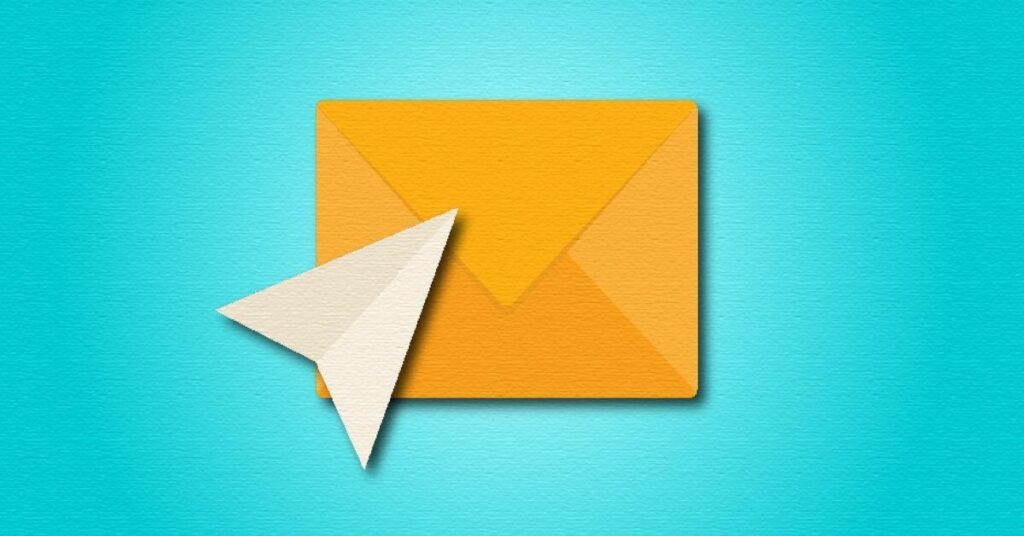
Building Your Ecommerce Email List
A crucial aspect of any successful ecommerce email marketing strategy is building a quality email list. This not only allows you to reach a wider audience, but also ensures that your emails are being sent to engaged and interested subscribers.
This section will discuss various lead capture techniques and the importance of quality over quantity.
Lead Capture Techniques
There are several techniques for capturing leads and building your email list. Some of the most effective methods include:
- Utilizing pop-up forms: strategically placed on your website to capture the email addresses of potential customers as they browse your site.
- Social media promotions: reaching a wider audience and encouraging people to sign up for your email list in exchange for a chance to win a prize or receive a special offer.
- Giveaways: enticing people to sign up for your email list by offering them a chance to win a prize or receive a special offer.
Another useful tool for capturing leads is MailOptin, which facilitates the creation and maintenance of pop-up and conventional opt-in signup forms. This tool allows subscribers to select their preferences and enhance their profile, enabling you to send more targeted and personalized emails that are likely to pique their interest.
Quality vs. Quantity
When building your email list, it’s essential to focus on quality over quantity. A large list of uninterested or inactive email subscribers can negatively impact your email deliverability and engagement rates. Instead, concentrate your efforts on capturing the email addresses of engaged and interested customers who are more likely to convert into paying customers.
One way to maintain a high-quality email list is by implementing a sunset series to clean your list periodically. This sequence of emails targets inactive subscribers and either encourages them to re-engage or removes them from your list, ensuring that you’re only sending emails to those genuinely interested in your content.
Focusing on building a quality email list ensures that email marketing efforts reach the right audience, leading to increased engagement, conversions, and ultimately, ecommerce success.
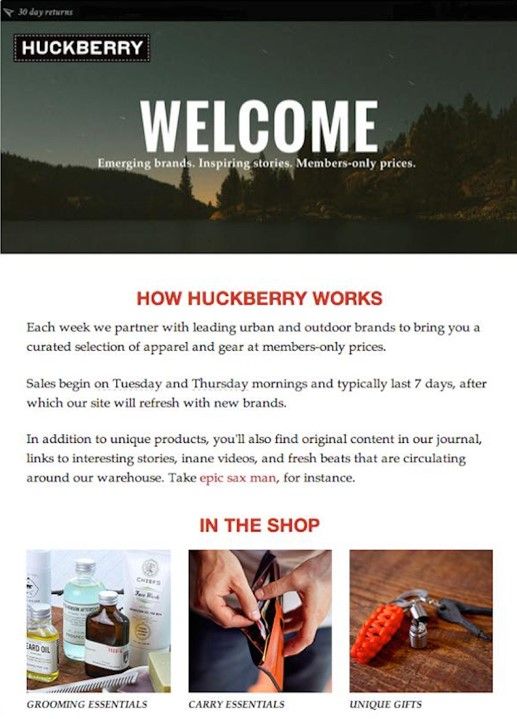
Crafting Effective Ecommerce Email Campaigns
Creating effective ecommerce email campaigns requires a combination of personalization, segmentation, and A/B testing. Implementing these strategies optimizes email campaigns and improves their overall performance.
This section will discuss each technique and its contribution to email marketing success.
Personalization
Personalizing your emails can significantly increase engagement and conversions. By using your customer’s attention and data, such as their name or recent purchase history, you can create individualized emails that resonate with your audience. This not only makes your emails more relevant and interesting to your subscribers, but also helps to build trust and loyalty with your customers.
To begin personalizing your emails, you can start with simple tactics like including the recipient’s name in the subject line or email body. As you gather more data on your subscribers, you can further personalize your emails by sending targeted content based on their interests or previous interactions with your brand.
Ultimately, personalization is key to crafting effective ecommerce email campaigns that drive engagement, build customer relationships, and generate sales.
Segmentation
Segmentation is another crucial aspect of creating successful ecommerce email campaigns. Dividing your email list into smaller groups based on specific criteria, such as demographics, interests, or previous purchase behavior, allows for sending highly targeted and relevant content to your subscribers. This not only results in higher open and click-through rates, but also helps to build trust and loyalty among your customers.
To begin segmenting your email list, start by analyzing your customer data and identifying common characteristics or behaviors among your subscribers. Once you’ve identified these segments, create tailored email campaigns that cater to the specific needs and preferences of each group.
By implementing segmentation in your email marketing strategy, you can ensure that your campaigns resonate with your target audience, ultimately leading to increased engagement and conversions.
A/B Testing
A/B testing is an essential tool for optimizing your ecommerce email campaigns and improving their overall performance. By testing different variations of your ecommerce emails themselves, such as subject lines, content, or calls-to-action, you can determine which version resonates most with your audience and drives the desired results.
To conduct A/B tests, follow these steps:
- Start by selecting a single element of your email to test, such as the subject line or call-to-action.
- Create two versions of the email, each with a different variation of the chosen element.
- Send each version to a small, randomized segment of your email list.
- Monitor the results, comparing the open rates, click-through rates, and conversion rates of each version.
- Determine which version performed better and use that as the basis for future emails.
Consistently conducting A/B tests and making data-driven decisions optimizes email campaigns and maximizes their effectiveness.

Essential Ecommerce Email Campaigns
There are several essential email campaigns that every ecommerce business should consider implementing to drive sales and customer engagement, as outlined in this guide to ecommerce email. These campaigns include:
- Welcome series
- Cart abandonment
- Post-purchase follow-ups
- Win-back series
- Back-in-stock notifications
- Sunset series to clean your list
This section will discuss each campaign and its contribution to email marketing success.
Welcome Series
A welcome series is a sequence of emails sent to new subscribers, introducing them to your brand and offering incentives to encourage their first purchase. These promotional emails can include an introduction to your brand, attractive incentives such as discounts or free shipping, and clear instructions for the desired action.
Welcome emails are particularly important as they:
- Set the tone for your relationship with your new subscribers
- Can have a significant impact on their engagement and loyalty to your brand
- Have been shown to generate a 3x increase in transactions and revenue per email compared to regular promotional emails.
Crafting an engaging and informative welcome series starts building a strong relationship with subscribers and encourages them to become loyal customers.
Cart Abandonment
Cart abandonment emails are an effective way to recover lost sales from customers who have added items to their cart but have yet to complete their purchase. These emails can be automated and typically include a reminder of the items left in the cart, along with a promotional discount or other incentives to encourage the customer to complete their purchase.
By optimizing your cart abandonment emails through A/B testing and personalization, you can increase the likelihood of customers returning to your site and completing their purchase. In some cases, businesses have seen a 5-15% improvement in their cart abandonment email campaigns by implementing these strategies.
Post-Purchase Follow-Ups
Post-purchase follow-up emails are essential for maintaining communication with your customers after they’ve made a purchase. These emails can include:
- Thank you messages
- Product review requests
- Customer feedback surveys
- Invitations to join loyalty programs
By engaging with your customers after their purchase, you can encourage repeat purchases, gather valuable feedback on customer journey, and foster brand loyalty over customer lifetime.
In addition to providing valuable information and incentives, post-purchase follow-up emails can also help address potential issues or concerns that customers may have. By proactively addressing these concerns and providing exceptional customer support, you can create a positive customer experience and strengthen your customer relationship and brand reputation.
Implementing a comprehensive post-purchase follow-up strategy continues to engage with customers and cultivates long-term relationships that drive ecommerce success.
Win Back Series
A win-back series is a specialized re-engagement effort designed to reconnect with and re-engage subscribers who have become inactive. These email campaigns typically include personalized messages, exclusive offers, and incentives to encourage inactive customers to return to your site and make a purchase.
Existing customers are 60-70% more likely to make a purchase from a company compared to new customers at 5-20%. By targeting inactive subscribers with a win-back series engagement emails, you can encourage them to re-engage with your brand and potentially boost your sales and revenue. Implementing customer retention strategies can further the customer journey and enhance these results.
Implementing a win-back series is an effective way to retain valuable customers and maintain a healthy email list, ultimately contributing to your ecommerce email marketing success.
Back-In-Stock Notifications
Back-in-stock notifications are automated emails sent to customers when an out-of-stock item is available again. These notifications can help to increase sales and provide customers with up-to-date information on the availability of popular products.
To set up back-in-stock notifications, you can use email marketing software that allows you to create automated emails triggered by inventory updates. By personalizing these emails with the customer’s name and the specific product they were interested in, you can create a more engaging and relevant message that is likely to drive sales.
Back-in-stock notifications are an effective way to keep your customers informed and encourage them to return to your online store to complete their purchase.
Sunset Series To Clean Your List
Maintaining a clean and healthy email list is essential for the success of your ecommerce email marketing efforts. By implementing a sunset series, you can periodically remove inactive subscribers from your list, ensuring that your emails are only sent to those who are genuinely interested in your content.
A sunset series typically involves sending a sequence of emails to inactive subscribers, encouraging them to re-engage with your brand or offering them the option to unsubscribe. By removing uninterested subscribers from your list, you can improve your email deliverability rates and focus your efforts on engaging with your active and interested customers.
Implementing a sunset series is a crucial step in maintaining a high-quality email list and ensuring the overall success of your ecommerce company and email marketing efforts.
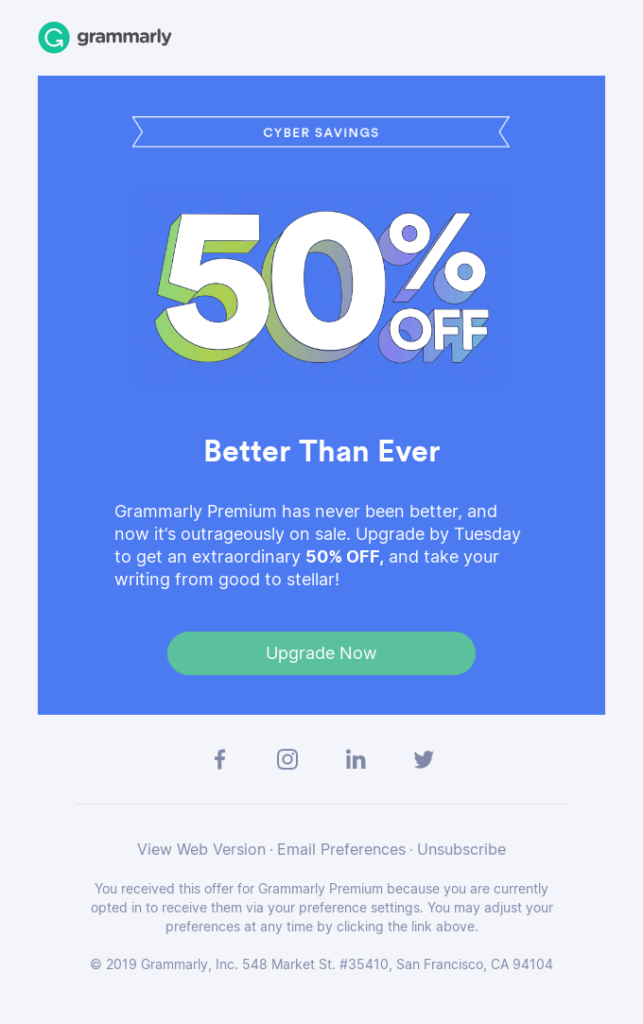
Advanced Ecommerce Email Marketing Techniques
Truly mastering the art of ecommerce email marketing requires implementing advanced email marketing strategies that go beyond the basics, ensuring your messages don’t end up in the spam folder. In this ultimate guide to ecommerce email strategy, we will focus on these advanced techniques.
This section will discuss the following advanced techniques to enhance email marketing success:
- Automation
- Personalized content
- Segmenting email lists
- Re-engagement campaigns
- Omnichannel integration
- VIP sequences
Automation
Automation is an essential tool for streamlining your email marketing efforts and ensuring consistent communication with your subscribers. By automating tasks such as sending welcome emails or cart abandonment reminders, you can save time and resources, allowing you to focus on more strategic aspects of your ecommerce business.
Many email marketing software providers offer automation features, making it easy to set up automated campaigns and workflows. Utilizing automation to manage email campaigns ensures that subscribers receive timely and relevant content, ultimately leading to increased engagement and conversions.
Incorporating automation into your ecommerce email marketing strategy can help you optimize your campaigns, improve customer engagement, and drive sales, making it an invaluable tool for success.
The power of personalized content in emails
The power of personalized content in emails cannot be overstated. By tailoring your email content to the specific needs, preferences, and interests of your subscribers, you can create a more engaging and relevant experience for your audience. This not only makes your emails more interesting and appealing to your subscribers, but also helps to build trust and loyalty with your customers.
Examples of personalized content in ecommerce email marketing include:
- Utilizing customer data to segment email lists and deliver tailored content
- Incorporating customer names in the subject line or body of the email
- Utilizing customer purchase history to recommend relevant products
Incorporating personalized content into email campaigns increases engagement, fosters stronger customer relationships, and ultimately enhances conversions and sales.
Segmenting email lists for targeted campaigns
Segmenting your email list for targeted campaigns is a powerful strategy for ensuring that your emails reach the right audience with the right message. By dividing your email list based on specific criteria, such as demographics, interests, or previous purchase behavior of own business, you can send highly targeted and relevant content to your subscribers. This not only results in higher open and click-through rates, but also helps to build trust and loyalty among your customers.
To effectively segment your email list, start by analyzing your customer data and identifying common characteristics or behaviors among your subscribers. Once you’ve identified these segments, create tailored email campaigns that cater to the specific needs and preferences of each group.
Segmenting your email list for targeted campaigns ensures the campaigns resonate with your target audience, ultimately leading to increased engagement and conversions.
Re-engagement Campaigns
Re-engagement campaigns are an essential strategy for reconnecting with and re-engaging subscribers who have become inactive. These targeted campaigns can help to win back customers who may have lost interest in your brand or have not made a purchase in a while.
To create a successful re-engagement campaign, start by identifying your inactive subscribers and segmenting them accordingly. Then craft personalized and engaging emails that offer exclusive deals, rewards, or content that is likely to resonate with these customers.
Implementing re-engagement campaigns not only retains valuable customers, but also maintains a healthy email list, ultimately contributing to ecommerce email marketing success.
Omnichannel Integration
Omnichannel integration is the process of unifying your marketing efforts across multiple channels, such as email, social media, and SMS, to create a cohesive customer experience. By integrating your email marketing with other channels, you can ensure that your customers receive consistent and relevant messages, regardless of the platform they are using.
To effectively integrate your email marketing with other channels, consider using email marketing software that offers integrations with popular ecommerce platforms and social media sites. This will allow you to streamline your email marketing messages and efforts and provide a seamless experience for your customers.
By implementing omnichannel integration in your ecommerce email marketing strategy, you can enhance customer engagement, increase brand visibility, and ultimately, drive sales.
VIP Sequences
VIP sequences are specialized email campaigns designed to reward your most loyal customers and encourage repeat purchases. These campaigns can include personalized messages, exclusive offers, and incentives that cater to your VIP customers’ specific needs and preferences.
To create an effective VIP sequence, first, identify your most valuable customers based on factors such as purchase frequency, average order, customer lifetime value, or overall engagement with your brand. Then segment these customers and create tailored promotional email campaigns that provide them with exclusive deals, rewards, and content.
By implementing VIP sequences in your ecommerce email marketing strategy, you can strengthen your relationships with your most valuable customers and encourage long-term loyalty and repeat purchases.
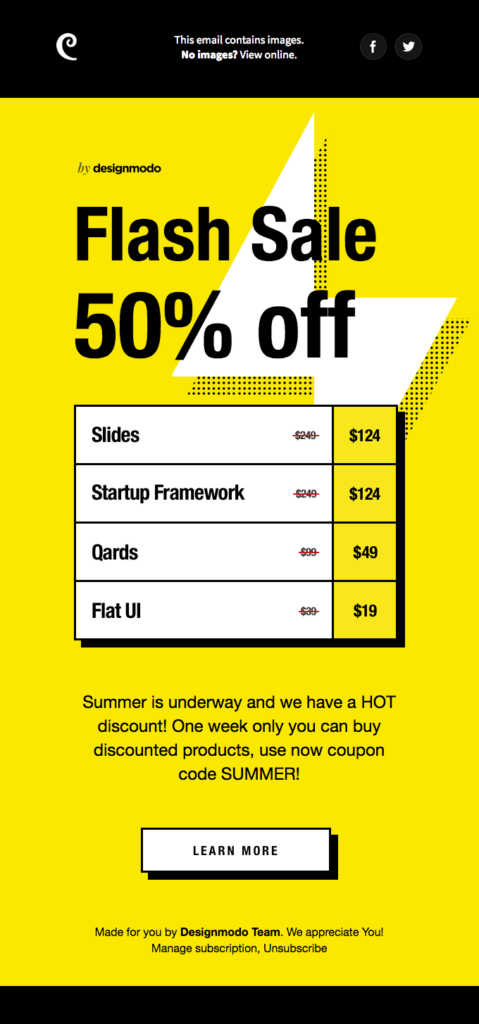
Measuring Ecommerce Email Marketing Success
Measuring the success of your ecommerce email marketing campaigns is essential to ensure that your efforts are paying off and to identify areas for improvement.
This section will discuss key metrics that can help evaluate the effectiveness of email campaigns, including open rates, click-through rates, and conversion rates.
Open Rates
Open rates are an important metric for gauging the effectiveness of your email subject lines and overall email engagement. This metric represents the percentage of recipients who open an email out of the total number of emails sent. Monitoring open rates identifies trends and patterns in email performance and facilitates data-driven decisions to optimize subject lines and content.
To improve your open rates, consider testing different subject line styles, such as incorporating emojis, using humor, or optimizing for brevity and clarity. By continually monitoring and adjusting your subject lines, you can ensure that your emails are capturing your subscribers’ attention and driving engagement.
Click-Through Rates
Click-through rates (CTR) are another crucial metric for evaluating the effectiveness of your email content and calls-to-action. This metric indicates the number of subscribers who have opened an email. It gives us an idea of how successful our campaigns have been in engaging people. Tracking your CTR determines how well email content resonates with your audience and aids in making adjustments to improve engagement and conversions.
To optimize your click-through rates, consider implementing A/B testing, personalization, and segmentation in your email campaigns. By continually monitoring and adjusting your email content, you can ensure that your emails are driving engagement and achieving your desired results.
Conversion Rates
Conversion rates are a key metric for assessing the overall success of your email marketing campaigns. This metric represents the ratio of conversions (sales, sign-ups, etc.) to the total number of emails sent. Monitoring conversion rates evaluates the efficacy of emails in generating leads or boosting revenue for your own ecommerce site or business.
To optimize your conversion rates, consider implementing the following strategies in your email campaigns:
- Personalization
- Segmentation
- A/B testing
- Dynamic content
By continually monitoring and adjusting your email strategies, you can ensure that your campaigns are driving results and contributing to your ecommerce success.

Best Practices and Tips for E-commerce Email Marketing Success
Effective e-commerce email marketing isn’t just about sending emails; it’s about sending the right emails in the right way. To optimize your campaigns and generate tangible results, adhere to these best practices:
1. Maintain a Clean and Healthy Email List
- List Hygiene: Regularly prune inactive subscribers from your list. It boosts engagement rates and ensures your metrics are more representative of your active audience.
- Re-Engagement Campaigns: Before removing inactive subscribers, try to re-engage them with special offers or surveys.
2. Respect Your Subscribers’ Time and Inbox
- Optimal Frequency: Avoid bombarding subscribers. Find a balance between staying top-of-mind and overwhelming them with too many emails.
- Quality Over Quantity: Prioritize sending valuable content over frequent, less relevant emails.
3. Always Gain Explicit Permission
- Double Opt-in: Implement a double opt-in process where subscribers confirm their intent to join your list. This ensures a higher-quality list and reduces the risk of spam complaints.
- Transparent Signup Process: Clearly mention what subscribers should expect in terms of email content and frequency.
4. Prioritize Mobile Optimization
- Responsive Designs: Ensure your email templates are mobile-responsive since a significant percentage of users open emails on mobile devices.
- Clear CTAs: Ensure your call-to-action buttons are easily clickable on mobile screens.
5. Segment Your Email List
- Personalized Content: Group subscribers based on demographics, buying behavior, or engagement levels to send targeted content.
- Tailored Offers: Send offers and deals that resonate with individual segments, increasing conversion chances.
6. Send Trigger-Based Emails
- Timely and Relevant: Automated emails (e.g., abandoned cart reminders) triggered by user actions are typically more relevant and timely, hence, more effective.
- Test Triggers: Regularly test and refine your triggers to ensure they’re driving desired actions.
7. Test and Refine Constantly
- A/B Testing: Test various elements of your emails (subject lines, images, CTAs) to determine what resonates best with your audience.
- Feedback Loops: Encourage subscribers to provide feedback on your email content and offers.
8. Comply with Regulations
- GDPR, CAN-SPAM, and More: Be aware of and adhere to email marketing regulations. This includes providing an easy opt-out mechanism in every email.
- Transparent Privacy Policies: Assure subscribers that their data is safe with you and won’t be sold or misused.
9. Offer Value with Every Email
- Educate and Inform: Not every email should be promotional. Offer tips, guides, or industry news to provide value.
- Exclusive Deals: Reward your email subscribers with special deals or early bird offers.
10. Encourage Social Sharing and Referrals
- Expand Your Reach: Add social share buttons and encourage subscribers to share deals, news, or contests with their networks.
- Referral Programs: Incentivize subscribers to refer friends or family to your list or store.
11. Monitor Unsubscribes and Complaints
- Act on Feedback: If you notice a surge in unsubscribes after a particular campaign, try to understand what went wrong and adjust accordingly.
- Respect Opt-outs: Ensure that unsubscribes are processed promptly.
12. Design for All Email Clients
- Multi-Client Testing: Emails can look different across various clients (Gmail, Outlook, Yahoo, etc.). Use testing tools to ensure your design is consistent across all platforms.
By adhering to these best practices, e-commerce businesses can build trust with their subscribers, boost engagement rates, and ultimately drive more sales. Remember, email marketing is not a one-size-fits-all approach, so always remain flexible, test different strategies, and stay updated with industry trends.

Common Mistakes to Avoid in E-commerce Email Marketing
While there’s a lot to get right in e-commerce email marketing, there are also several pitfalls you need to sidestep. Even seasoned marketers can sometimes fall into these traps. By being aware of these common mistakes, you can better position your brand for email marketing success.
1. Ignoring Personalization:
- Why it’s a Mistake: Sending generic emails that don’t cater to the unique preferences of the recipient can come across as impersonal and irrelevant.
- How to Avoid: Always segment your list and tailor your content. Use data analytics to get insights into user preferences.
2. Overwhelming Your Subscribers:
- Why it’s a Mistake: Bombarding inboxes can lead to subscriber fatigue, increased unsubscribe rates, and diminished brand perception.
- How to Avoid: Stick to a consistent schedule and ensure that each email serves a clear purpose.
3. Neglecting Mobile Optimization:
- Why it’s a Mistake: A significant percentage of people open emails on mobile devices. If emails aren’t optimized, you risk a poor user experience.
- How to Avoid: Design emails with a mobile-first mindset and always test on various devices.
4. Overlooking the Importance of Subject Lines:
- Why it’s a Mistake: Your subject line is the first impression. A lackluster subject line can lead to low open rates.
- How to Avoid: Craft compelling, concise subject lines. A/B test to find what resonates with your audience.
5. Not Monitoring Analytics:
- Why it’s a Mistake: Without monitoring key metrics, you’re in the dark about what’s working and what’s not.
- How to Avoid: Regularly review email analytics. Pay attention to open rates, click-through rates, and conversion rates to adjust strategies accordingly.
6. Avoiding A/B Testing:
- Why it’s a Mistake: Assuming that the first version of your email is the best can lead to missed opportunities for optimization.
- How to Avoid: Always test variations of your emails, from content to design elements.
7. Failing to Establish a Clear CTA:
- Why it’s a Mistake: Emails without a clear call-to-action can confuse readers about the next steps, leading to lost conversion opportunities.
- How to Avoid: Ensure every email has a clear, compelling, and easily identifiable CTA.
8. Ignoring List Hygiene:
- Why it’s a Mistake: Holding onto outdated or non-engaged email addresses can skew your analytics and hurt deliverability.
- How to Avoid: Periodically clean your email list, removing inactive and unengaged subscribers.
9. Not Providing an Easy Opt-out Mechanism:
- Why it’s a Mistake: Making it hard for users to unsubscribe can lead to increased frustration and potential spam reports.
- How to Avoid: Always include a clear and easily accessible unsubscribe link in your emails.
10. Failing to Stay Updated on Email Marketing Regulations:
- Why it’s a Mistake: Non-compliance can result in hefty penalties and can damage your brand’s reputation.
- How to Avoid: Stay informed about regulations like GDPR, CAN-SPAM, and others, and ensure your practices align with them.
11. Sending Without Testing:
- Why it’s a Mistake: An overlooked typo, broken link, or design flaw can make your brand look unprofessional and reduce the email’s effectiveness.
- How to Avoid: Always send test emails to ensure everything appears and works as intended before launching your campaign.
While email marketing is undoubtedly a potent tool for e-commerce, it’s essential to approach it thoughtfully. By avoiding these common mistakes and continually refining your strategy, you can harness the full power of email and other marketing channel for your e-commerce business.
The Future of E-commerce Email Marketing
The landscape of e-commerce email marketing is constantly shifting, reflecting changes in technology and evolving consumer preferences. Let’s delve into some key emerging trends that hint at its promising future.
First and foremost, the integration of Artificial Intelligence (AI) and Machine Learning (ML) into email marketing stands out. These technologies promise a new era where vast amounts of data are synthesized to predict and personalize content that a user would find most engaging. The days of generic email blasts are fading. Instead, AI-powered tools can craft personalized email campaigns tailored to individual preferences, ensuring higher engagement, better conversion rates, and a significant uptick in customer retention.
But the emails of tomorrow won’t just be smarter; they’ll be more dynamic. We’re moving towards a phase where interactive and dynamic emails become the norm. Imagine receiving emails with carousels you can swipe, embedded surveys you can fill out without leaving your inbox, or products you can hover over to see different angles. These aren’t just flashy features; they transform passive email readers into active participants, dramatically enhancing user engagement.
In a world teeming with communication platforms, email won’t stand isolated. The future heralds deeper omnichannel marketing integrations. This means your email communications will seamlessly tie into your social media campaigns, web push notifications, and other touchpoints. The result? A consistent brand message and an integrated customer experience, no matter where your audience interacts with you.
With advanced personalization, the connection between brands and their customers will reach new depths. Far beyond merely addressing a subscriber by their first name, future emails will tap into a recipient’s browsing history, purchase behavior, and more. It’s about crafting messages so pertinent that they feel like a one-on-one conversation, strengthening brand loyalty.
And speaking of immersive experiences, there’s a lot of buzz around incorporating Augmented Reality (AR) and Virtual Reality (VR) into email marketing. Visualize an email where you can virtually try on a dress or see how a sofa looks in your living room. Such immersive capabilities can skyrocket trust and conversion rates.
But with great personalization comes great responsibility. As brands gain access to more consumer data, there’ll be a heightened focus on privacy and security. Companies will not only implement more secure email practices but will also be transparent about how they use and safeguard user data. In this future landscape, trust will be as crucial as the content itself.
Now, let’s touch upon the role of predictive analytics. We’re looking at a shift from merely understanding what a subscriber has done to predicting what they’ll do next. This foresight allows brands to be proactive, anticipating interests or concerns before they’re even voiced.
One aspect that promises to boost real-time relevance is the capability of emails to reflect real-time content updates. Think about opening an email and always seeing the most updated inventory or the latest time-sensitive offer, ensuring timely relevance.
Moreover, in a world increasingly aware of its ecological footprint, emails will mirror a brand’s commitment to sustainability and social responsibility. Brands that transparently promote eco-friendly practices and products will resonate deeply with the modern consumer.
Lastly, as voice assistants become a staple in many households, we might be on the cusp of voice-activated email interactions. This could redefine email content, making it concise and optimized for voice interactions.
E-commerce email marketing is on the brink of a transformative era. It promises enhanced user experiences and deeper brand-customer connections. Staying abreast of these changes won’t just be beneficial; it’ll be essential for all ecommerce brands aiming to thrive in this dynamic digital landscape.
Summary
In conclusion, mastering ecommerce email marketing is essential for driving sales, engaging customers, and retaining them in the long run. By implementing the strategies and techniques discussed in this ultimate guide, you can create effective ecommerce email automation, manage campaigns well, choose the right software, build a quality email list, and measure your success. With a well-crafted ecommerce email marketing strategy in place, you can unlock the true potential of your business and achieve ecommerce success in 2023 and beyond.
Frequently Asked Questions
What makes a successful eCommerce email?
To create a successful eCommerce and email marketing program, focus on one goal, use a professional tone and target your target audience more effectively.
This will make it more likely that readers will pay attention to your message.
How effective is email marketing for eCommerce?
Email marketing is highly effective for ecommerce businesses as statistics show that over 80% of retailers consider it one of the most cost-effective ways to retain customers, with more than 99% of consumers checking their inbox daily.
Its automated welcome email and abandoned cart emails can also increase conversion rates and bounce back or win-back campaigns can increase a customer’s number of purchases.
What are the 7 email marketing strategies?
Adopt 7 strategies to improve your email marketing campaigns – personalisation, crafting of compelling subject line and lines, mobile optimisation, automation, A/B testing, content marketing and data analysis – for greater customer engagement and growth.
Is email marketing still effective in 2024?
Yes, email marketing remains a highly effective form of digital marketing and is just as important in 2023 as in the past. It offers businesses stability, control, and affordability, making it one of the top marketing channels for businesses today.
